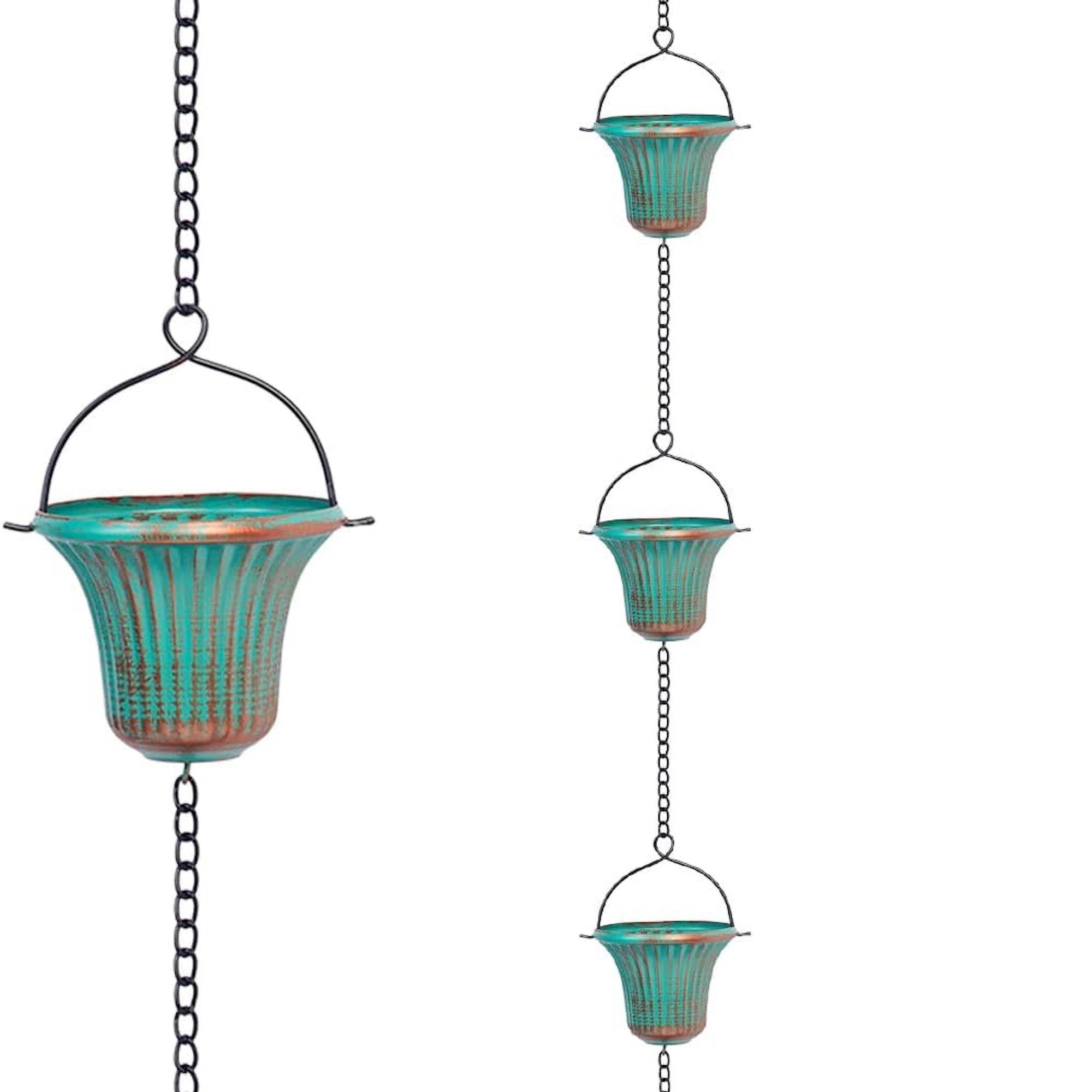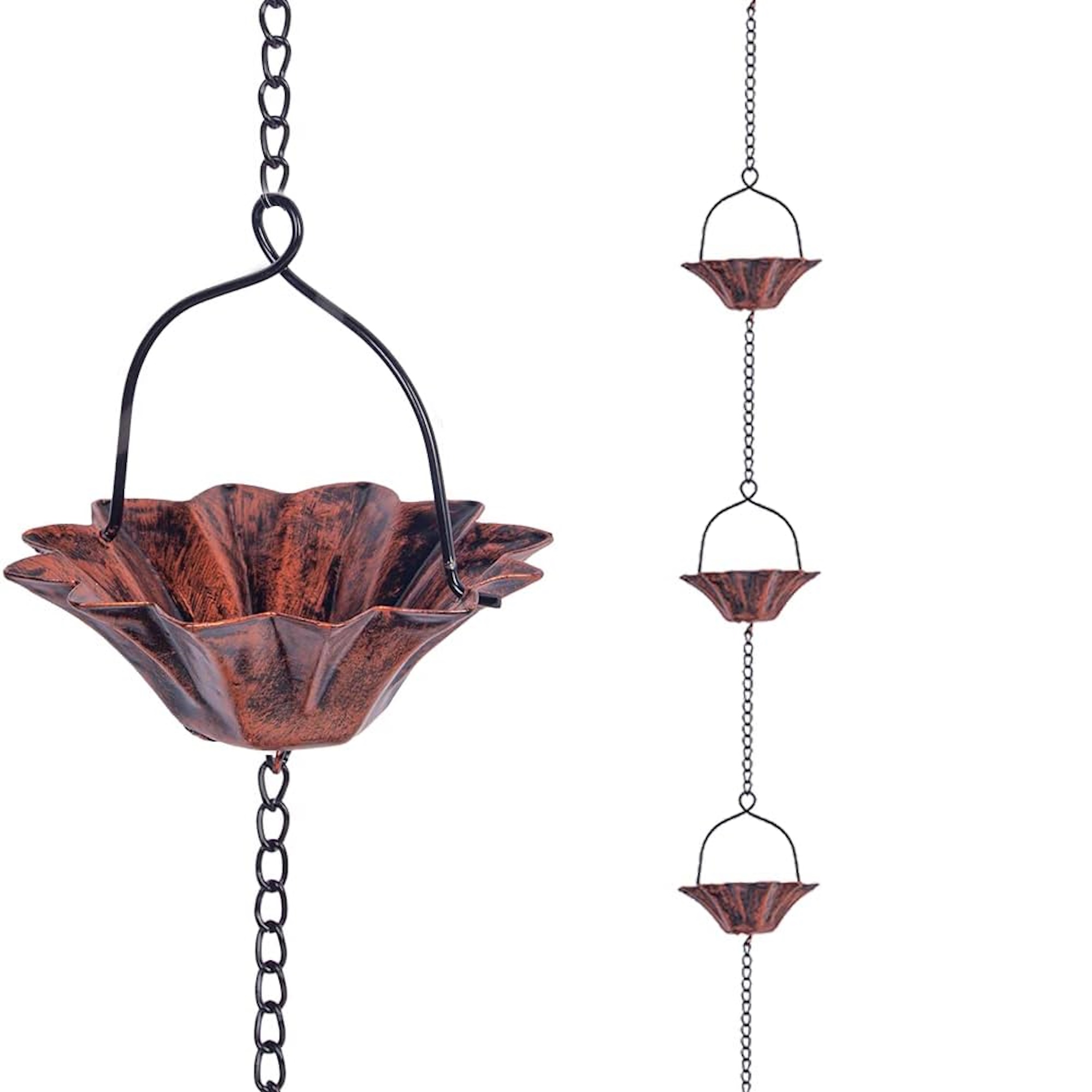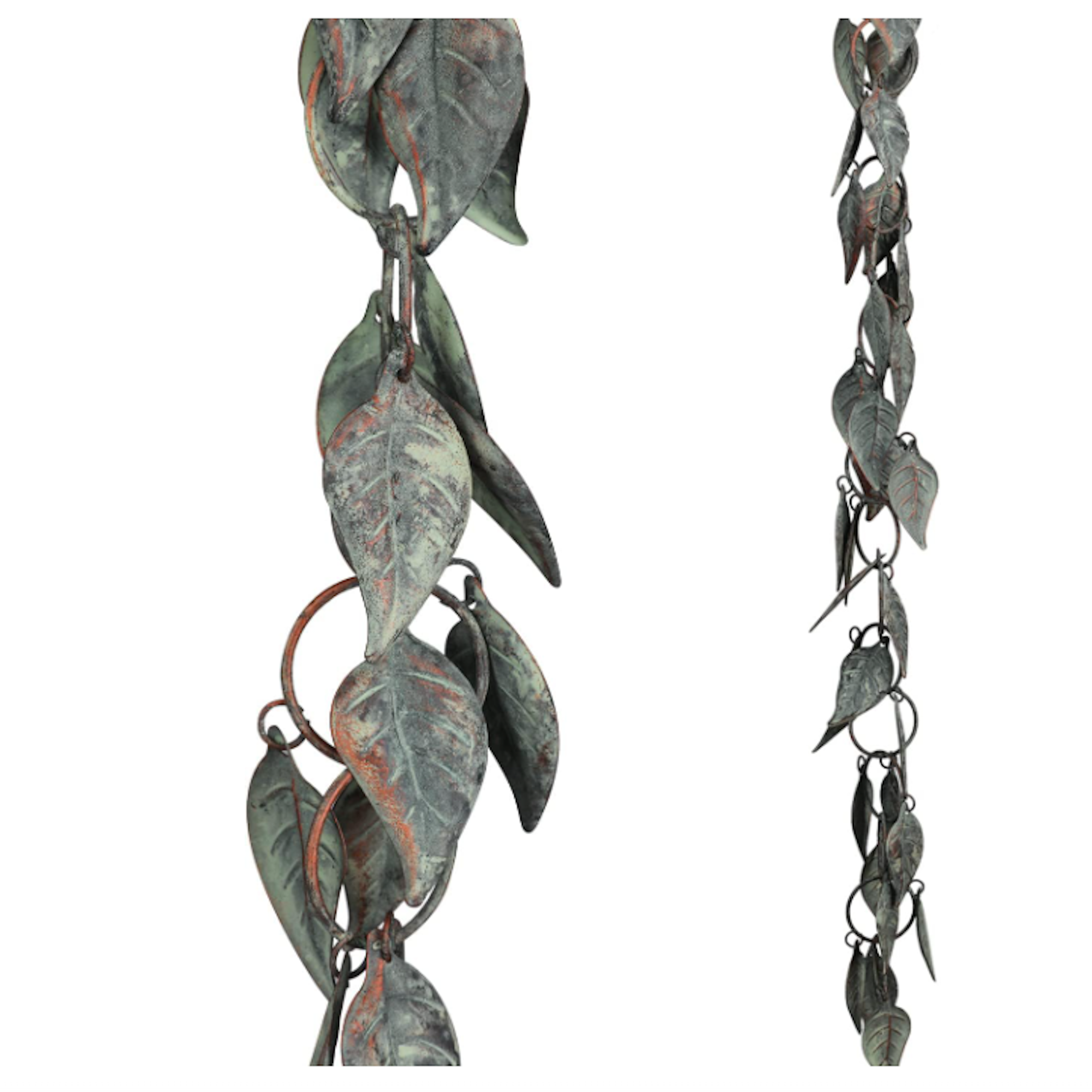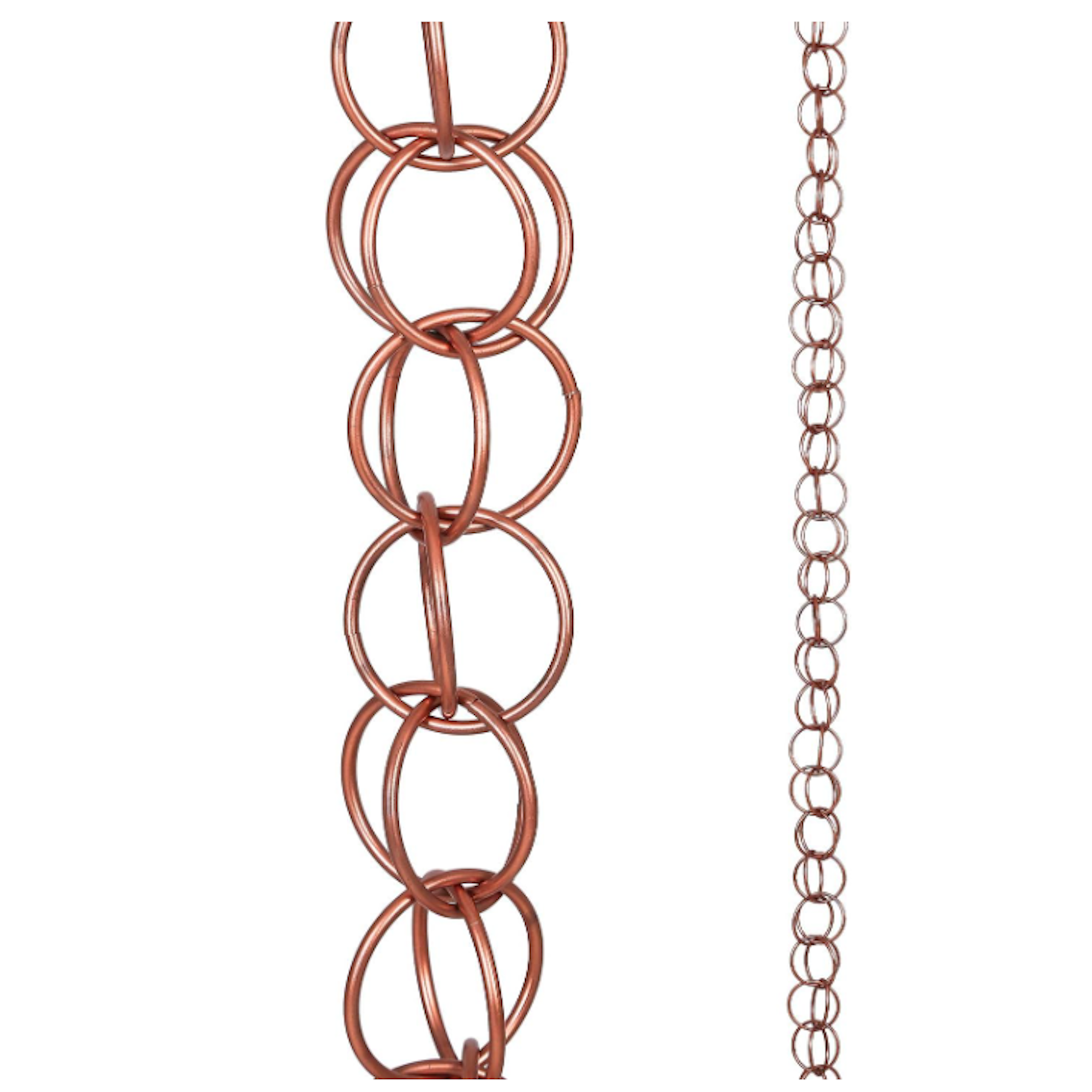How to choose a rain chain – 4 essential points to consider when selecting a rain chain for your yard
We take a look at which styles of rain chain are most efficient and would work best depending on your local climate


When it comes to understanding how to choose a rain chain there are several important elements to consider. You will of course want to select a style that suits your yard and exterior aesthetic, but it might also serve to think about your local climate in terms of average rainfall and whether you have prolonged frosts over winter, as this could have a bearing on the type you pick.
As we know, the rain chain trend is on the rise in the US. These decorative rainwater harvesting systems hail from Japan, where they have been used for centuries to direct rainwater from the roofs of temples and homes in place of traditional downspouts.
'When it comes to protecting a home, particularly the roof, homeowners are constantly battling the rain,' says Janna Bradley, co-founder of Landscape Management Network. 'For many years, the classic downspout was the go-to for making sure rain did not damage your house, but an increasing number of us are now opting for a rain chain instead. Not only do these chains keep water runoff away from roofs, but they also look beautiful and add a gorgeous accent to any yard'
There are many great reasons to install a rain chain. And as so many more of us are dealing with issues in our yards relating to climate change, such as drought and rising temperatures, using a rain chain to harvest rainwater or direct it onto a spot in your garden which is in particular need of irrigation, makes a lot of sense.
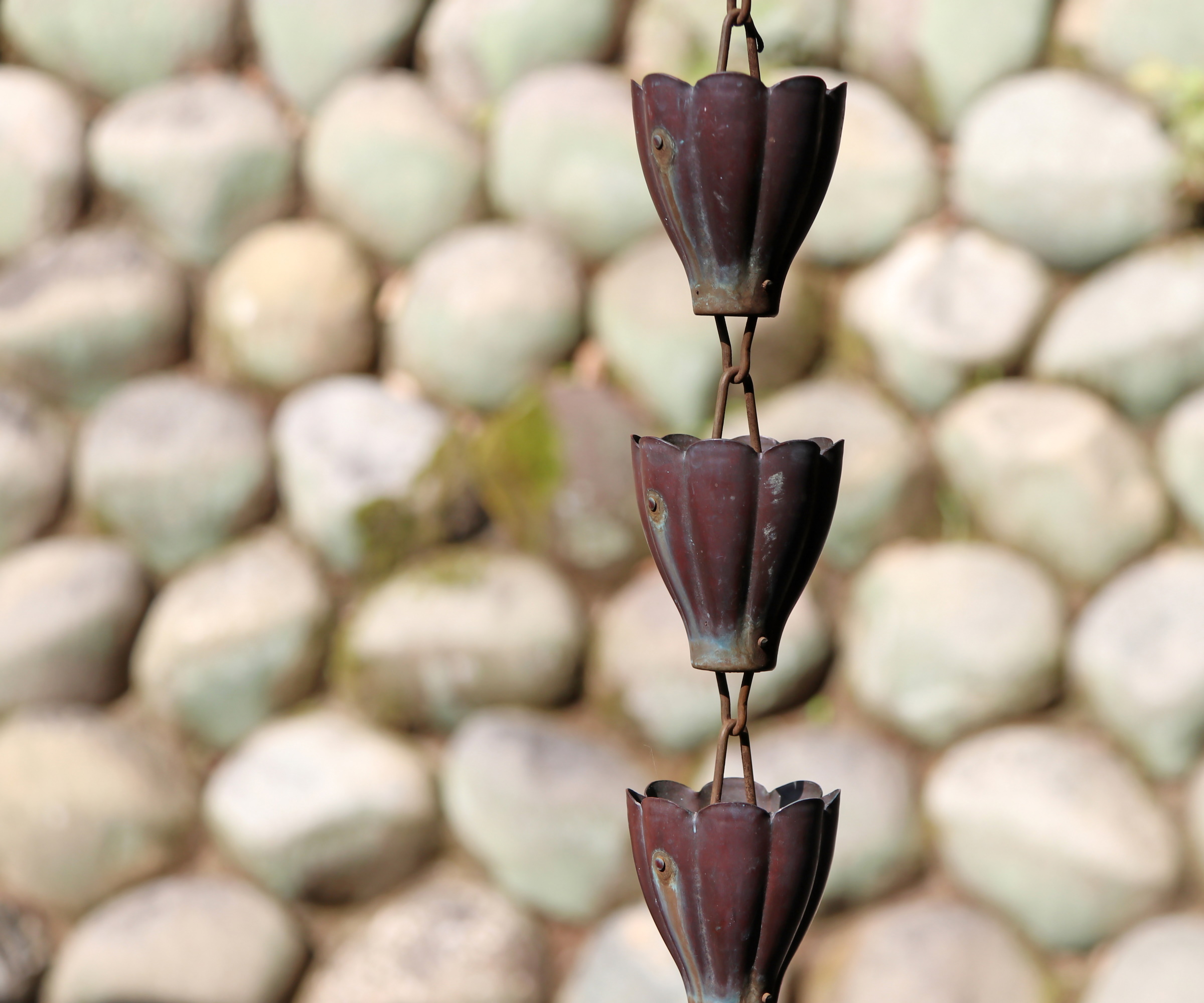
4 key considerations to help you choose the right rain chain for your yard
We asked the experts for advice on how to choose the right rain chain to best suit your local environment, and get the low down on which styles and materials are the most efficient.
Research different materials

Rain chains are available in a range of different, all fairly durable, materials. Metals such as copper, steel, pewter, and aluminium tend to fair best, as they can withstand prolonged and consistent exposure to the elements.
'Copper is one of the most popular materials for rain chains, and rightfully so,' says Janna Bradley. 'This material is super durable, will withstand most weather, and its beauty actually increases because of exposure to rain - forming a patina and growing darker after it has been exposed to the outside world.'
Design expertise in your inbox – from inspiring decorating ideas and beautiful celebrity homes to practical gardening advice and shopping round-ups.
If you prefer a different look, stainless steel is also another solid option.
'It's super durable and resistant to both rust and corrosion, explains Janna. 'Stainless steel is a particularly good choice for homes in regions with high humidity, harsh weather conditions, or salt air.'

Janna is the co-founder and COO of Landscape Management Network. With more than two decades of experience in the landscaping industry, Janna began her professional journey in the industry by co-founding TBG Landscaping. Janna is an avid outdoors enthusiast and gardener. She helped launch a non-profit organization that helps provide children with opportunities to get outside through mountain biking lessons and competitions.
Think about your local climate

Rain chains can handle moderate to heavy rainfall, provided the links or decorative objects on the chain itself are not too small. There needs to be adequate surface tension for the rain water to flow smoothly and continuously down the chain.
If you live in a part of the country which experiences consistently high rainfall, try to factor this into the way your chain works, ensuring it adequately directs the rain water away from your home's foundations.
'Rain chains can create a splash if the water is coming down too heavily. They handle moderate rain but if it is coming down heavily the water will go everywhere as the chain cannot dispose of it quick enough,' says Kody J Ketterling, founder of Landscape Expert at K-IT Products. 'We recommend putting some sort of big catch basin at the base of your chain, so that if you have the splash it is still catching the water and moving it away from the foundations.'
In terms of what happens to rain chains in the winter, if you live in an area with harsh winters and heavy frosts, watch out for ice and icicles forming. This may be more prone to happening if you have cup-shaped rain chain links, or anything which might catch water inside it, rather than a standard chain link design.
‘Rain chains can be good at making big ice chains in the cold climates, but this in turn makes them heavy,' says Kody. 'A little ice isn't too much of a problem, just make sure it doesn't block the hole at the top where it attaches to the gutter system.’ Or that it doesn't get too heavy and risks damaging your guttering.
Consider whether you need to anchor your rain chain
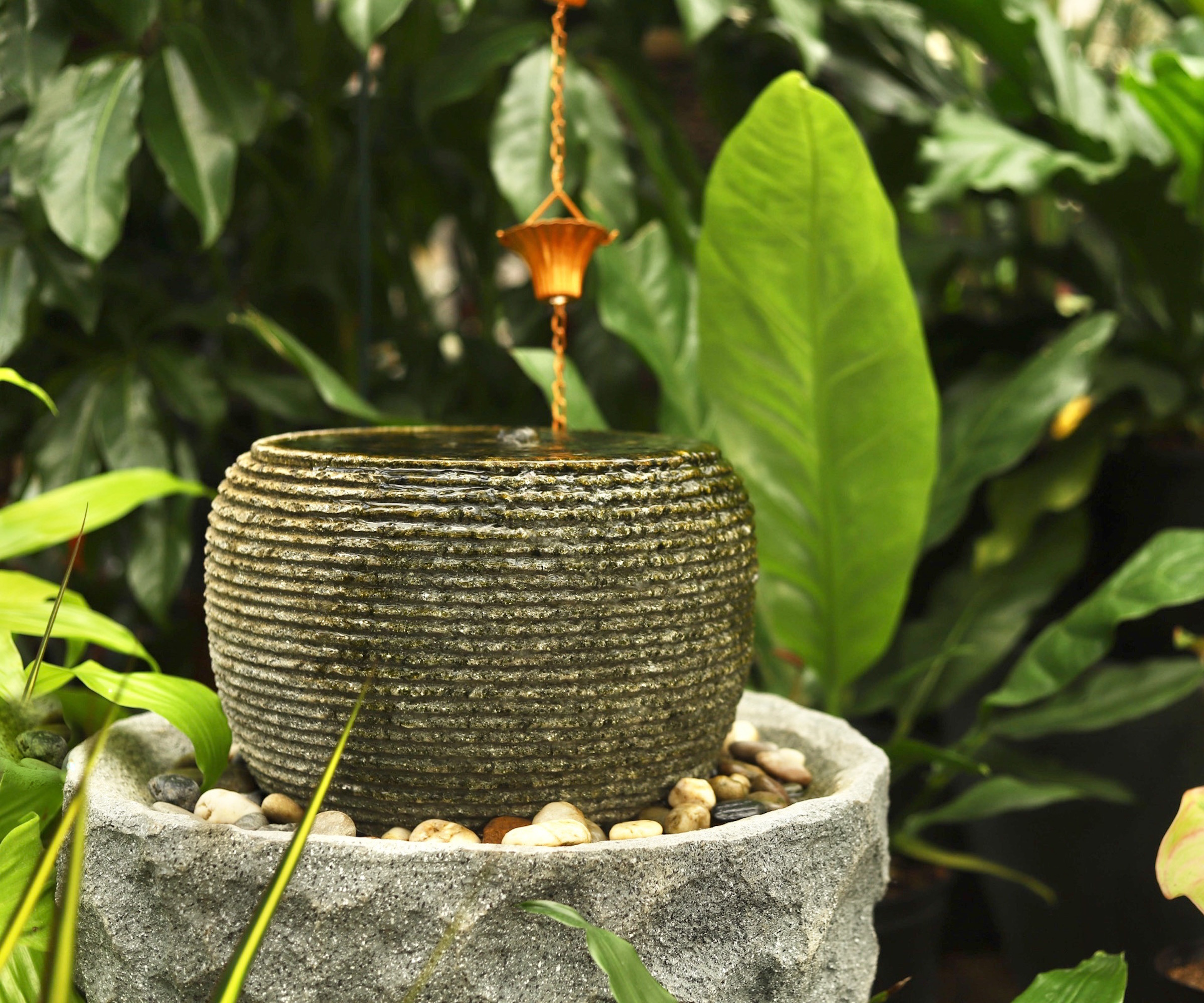
If you live in areas with little wind, or your rain chain will be located in a sheltered, protected area, you can choose a lightweight material such as aluminum for your rain chain. It won't be quite as durable as the heavier metals, however it also won't be as heavy.
If, however, high winds are something your local area experiences often, you need to opt for a heavier chain and make sure it is anchored within a catch bowl or a water butt to avoid too much movement and potential damage to your property.
Kody J Ketterling explains: 'You need to attach your rain chain to the ground or to a catch basin. The reason why is because chains can move in the wind and even the water flow can cause them to sway somewhat. Attaching them to an anchor will make the water flow straight down to where you want it to go.'

Founder of K-IT Products, Kody J Ketterling has run his own landscaping maintenance business for more than a decade. He is an expert in lawn care and maintenance, water conservation, gardening, water features and landscape design.
Take into account efficiency as well as style

Cup-style, decorative rain chains are more efficient at coping with heavy rainfall than the traditional chain link designs. This is because they are better at directing water down the chain.
Simple chain designs carry a sleeker, more minimalist appearance, and may suit more modern homes and yards, as well as areas that don't experience a lot of heavy rainfall.
Rain chains are approximately 8ft long, however if you need a longer one it is usually a simple task to add sections of chain, which many retailers sell as additional extras.
Shop stylish rain chains
https://www.homesandgardens.com/advice/rainwater-harvesting
FAQs
Can I add LED lights to my rainchain?
Kody J Ketterling, founder of Landscape Expert at K-IT Products says his company has got creative with rain chains by putting LED lights in them.
'We opt for ones that are solar operated and waterproof. They will light up at night and look beautiful glimmering as the water is flowing down the chains over the lights.'
Should I clean my rain chain?
Yes, it is a good idea to regularly check and clean your rain chain to ensure no leaves or other garden debris are blocking the flow of water. It's also advisable to wipe the chain clean to remove any minerals or dirt build up.
If you like the idea of rainwater harvesting, and having water features in your yard you might like to know how to build a pond or create a water garden.

Rachel is a gardening editor, floral designer, flower grower and gardener. Her journalism career began on Country Living magazine, sparking a love of container gardening and wild planting. After several years as editor of floral art magazine The Flower Arranger, Rachel became a floral designer and stylist, before joining Homes & Gardens in 2023. She writes and presents the brand's weekly gardening and floristry social series Petals & Roots. An expert in cut flowers, she is particularly interested in sustainable gardening methods and growing flowers and herbs for wellbeing. Last summer, she was invited to Singapore to learn about the nation state's ambitious plan to create a city in nature, discovering a world of tropical planting and visionary urban horticulture.
